 FREEZING IN THEIR HOMES is the new grim reality for many Brits and Northern Europeans. Margaret is 92 years old and has just come in from the winter cold, but no warmth awaits her at home. She fears her own home more than the icy streets. Next to her are four thick blankets, and on the shelf above the fireplace, which she can no longer afford to buy wood for, is a meter showing the daily cost of electricity (inset). It shows £1.03. When it reaches £3, she is forced to turn off the little heat she has to afford it. Still image: ITW News
FREEZING IN THEIR HOMES is the new grim reality for many Brits and Northern Europeans. Margaret is 92 years old and has just come in from the winter cold, but no warmth awaits her at home. She fears her own home more than the icy streets. Next to her are four thick blankets, and on the shelf above the fireplace, which she can no longer afford to buy wood for, is a meter showing the daily cost of electricity (inset). It shows £1.03. When it reaches £3, she is forced to turn off the little heat she has to afford it. Still image: ITW News
Brits Forced to Live in Darkness and Cold
Food prices are rising at a furious pace, fastest in Scotland in almost half a century. At the same time, energy prices are at record highs. People are forced to choose between freezing or going hungry, and a majority of Scots are forced to live in cold and darkness to cope with bills. Old generations' tricks for saving and keeping warm are returning. Nevertheless, it is feared that 10,000 Brits will die of cold homes this winter. We present the Swedish Public Health Agency's guidelines on indoor temperature. Governments in Europe are introducing rationing and monitoring of food purchases. Net-zero emissions are a lie that, in practice, de-industrializes the West and dramatically lowers our standard of living.
Published: April 29, 2023, 7:41 pm
On March 10, the Scottish trade magazine Scottish Housing News published a frightening report from Scotland’s largest builder, Barratt Developments Scotland. It shows that 51 percent, a majority of Scots, could not afford to heat or light their homes. They were forced to live in chilly homes with the lights off, as they otherwise could not afford to pay for electricity.
Gas and electricity bills have risen even more in recent months, and the UK government’s support system for energy bills will end at the end of March, further putting pressure on already strained British households. Those who suffer the most are the elderly and sick, not least those with lung disease and asthma. This is exacerbated by disease-causing mold that comes with cold and damp indoor climates. Reported cases of mold-damaged homes in Scotland have increased by 25 percent since 2021. Tens of thousands of Scots are already affected.
It is alarming to hear about people living in cold and darkness to save money on bills.
– Steve Mariner, Sales and Marketing Manager at Barratt Developments
Thousands are feared to die as a result of these conditions. Already last winter, over 7,400 Brits died as a result of cold homes. But since last winter, electricity prices have doubled, so the figure is believed to be significantly higher this winter. In December 2022 alone, 1,047 Brits, mostly elderly, died as a result of cold and damp air in their homes. This is 36 percent more than in December 2021, indicating that over 10,000 Brits are likely to die this winter due to cold in their homes… or rather, poverty, not being able to afford electricity.
Grandfather’s long johns are back
The survey shows that many are now forced to resort to tricks that their grandparents once used to keep warm during the winter with simple means, such as wearing long johns or sealing door gaps. It emerged that 58 percent, again a majority of respondents, now routinely wear thermal underwear at home to cope with the cold in their homes. 40 percent cover gaps under doors and 41 percent have hung up thick curtains over both doors and windows. People warm themselves under blankets and with tea lights. A quarter use electric heated blankets in bed, instead of heating the bedroom. 57 percent of respondents have turned off radiators in rooms they rarely or never use, and it appears they are forced to live in a smaller part of their homes.
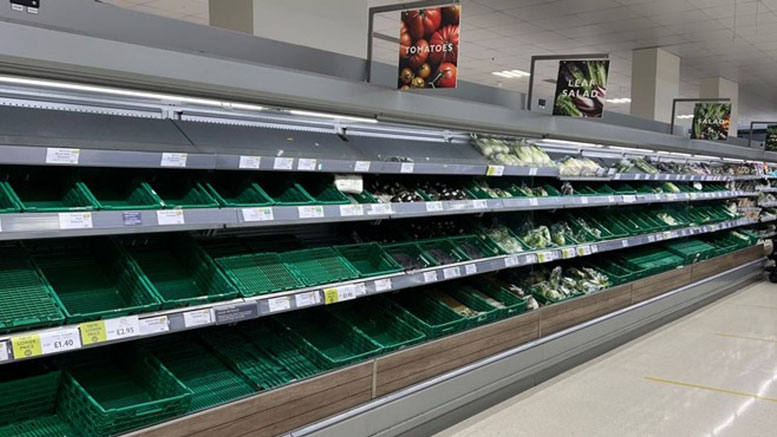
EMPTY FOOD SHELVES in the UK in February and March have further aggravated the situation for an already severely tested population. Here is the vegetable section in one of the supermarket chain Waitrose’s stores. There is also a shortage of many other food items, including eggs. Still image: Sky News
Those hardest hit are, as usual, families with children and the elderly, but another age group also stands out. It is the so-called Generation Z, those born between 1997 and 2013. In this age group, there are young adults up to 26 years old, many of whom work online from home. The survey shows that nearly two-thirds in this age category are forced to turn off lights and lower the temperature so much that they often become ill. It is especially serious when it affects a group that largely works from home, as they are forced to breathe the raw and disease-causing air created in too cold homes around the clock.
This is happening in the once-rich and powerful United Kingdom, which only a hundred years ago was the largest empire in world history.
Cold home is a health risk
The Swedish Public Health Agency warns against having too cold a home and writes:
“Too cold indoors can affect blood pressure and is believed to increase the risk of heart and vascular diseases and lung-related diseases. Rheumatism and certain muscle diseases can also be negatively affected if it is too cold. Drafts can cause muscle problems, stiff necks, and eye irritation.”
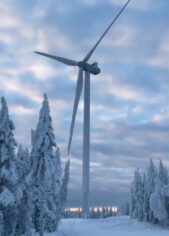
Wind turbines with heavy ice formation on the rotor blades. When the wind turbines do not produce their own energy, they must be heated by external power supply to prevent them from freezing and breaking. Photo: Nya Tider
The Public Health Agency recommends an investigation of indoor temperatures if they fall below 20 degrees Celsius. This is to ensure that the “operative temperature” does not fall below the guideline value of 18 degrees Celsius. The “operative temperature” refers to the average of the air temperature and surrounding surface temperature. The Public Health Agency also clearly states that this is an absolute minimum. They write on their website:
“The indoor temperature should take into account people who need a warmer indoor temperature. For sensitive groups, the temperature should be 2 degrees higher. Examples of sensitive people may include the elderly, those with mobility impairments, people with rheumatism, and people with lower metabolism. The municipal environmental and health protection office can decide whether a person belongs to a sensitive group.”
If the temperature is lower, those affected are urged to contact their landlord or housing association. The Public Health Agency then writes:
“If sufficient measures are not taken, the next step is to contact the municipality’s environmental and health protection office. They can require the property owner to investigate and possibly remedy the indoor temperature.”
Food shortages and rationing
The situation is further aggravated by soaring inflation, with rapidly rising food prices and increasing interest rates. The survey shows that 55 percent of respondents were very concerned about rising interest rates. This not only affects homeowners with loans but also tenants, as landlords are often in debt themselves. Overall, it is a witch’s brew of rising costs for interest, electricity, fuel, food, and other necessities. Rising interest rates and energy costs affect virtually everything. For example, grocery stores are forced to pay more in rent, electricity, and transportation. Their increased costs, in addition to already high purchasing costs from distributors, are then added to already high product prices.
There is also a lesser-known reason for rising food prices, which is declining harvests, reducing supply while demand remains the same or increases. The lower harvests are mainly due to the cooler climate that Nya Tider has been at the forefront of reporting since 2019. For Europe, for example, Spain and countries in North Africa, from which we import, have been affected by poor harvests.
This is also due to higher energy prices, which have largely wiped out the production of artificial fertilizers outside of Russia and a few other countries that continue to have cheap energy. Europe has seen a large part of its chemical industry and artificial fertilizer production shut down. Without artificial fertilizers, almost half of the world’s population would be without food. The sharply reduced production globally will, therefore, have a devastating impact on global food security.
Europe is also affected by greenhouse farming closures, which supply the continent with a large portion of its fruits and vegetables, being forced to shut down during the winter months due to the high costs of heating. This not only creates shortages but further drives up prices. In the United Kingdom, this has been evident in grocery stores, where shelves have been empty during February and March. The situation has occasionally been so severe that rationing has been introduced, which is the first time since World War II. Customers are only allowed to buy three types of vegetables and a maximum of two of each. An example of this is the supermarket chain Morrison.
This has forced many Britons to shop around at multiple stores to find everything they need, to the extent that it is even possible. Tomatoes, for example, are expected to remain scarce until the end of April. Given the worsening food security situation, many fear that rationing, which has been implemented by private companies this time, could soon be mandated by the state. Some believe this to be one of the main reasons why the EU and many Western countries are accelerating the digitization and surveillance of food purchases. An example of this is Norway, which last year began registering all food purchases, where and what type of food all Norwegians buy. Many fear that this is a step towards a future digital rationing system.
Net zero – a lie
It is worth remembering that Scotland has boasted about being the best in the UK at transitioning its energy production to “green energy,” especially with numerous wind turbines. In 2019, mainstream media had headlines such as “Why is Scotland leading in renewable energy?” (ITV News). Now, reality has caught up. Wind turbines notoriously perform poorly during winter, so poorly that they often consume energy instead of producing it. This is because they need to be heated to prevent freezing during the winter, using energy from the regular power grid or diesel generators. Advocates of “green energy” and power companies are silent about this.
There is a genuine shortage, but this is self-inflicted. We could have chosen to subsidize energy this winter as we did for other industries.
Justin King, former CEO of the UK’s second-largest grocery chain Sainsbury’s, on the shortage of fruits and vegetables
This winter was exceptionally cold in Scotland, and the strain on the power grid that supplies the wind turbines was so great that the Scottish power company was forced to heat its wind turbines using large quantities of diesel generators. They tried to keep this a secret, but it leaked out (see NyT v.10/2023). This is an important reason why the Scots suffered the most in the UK this winter.
However, it is not only the Scots but all Britons who are affected by the “green transition,” which is anything but green since reduced carbon dioxide leads to reduced vegetation and thus wildlife, that is, less food for humanity. The supposedly green agenda is already hitting hard against energy production. It also damages and increases the costs of food production, as the resulting high energy prices have led to a sharp reduction in artificial fertilizer production and numerous greenhouse closures across Europe.
The green agenda does not involve a gradual and proven transition with preserved energy security but enforces closures of not only fossil-fueled power plants but also, for example, hydroelectric plants that are claimed to threaten or destroy wildlife (see NyT v.27-28/2022). When the energy crisis becomes uncontrollable, emergency measures are forced, often involving the restarting of coal-fired power plants that genuinely pollute the environment. We have seen this in several EU countries and American states. The UK has also been forced to keep its aging coal power plants on standby and must do so for at least another year to avoid a catastrophe next winter. The shutdown of these plants has been postponed several times, and the operators themselves, the British company Drax and EDF, owned by the French state, actually want to close them down by the end of March. This is because they have already retired parts of the staff and can’t handle maintenance, which must be planned well in advance. Now, the bizarre situation has arisen where the agenda-driven politicians, who have been eager to shut down the power plants, are begging the owners to keep them open until spring 2024.

COLD, DAMP, AND MOLD. Single mother of three Louise is fighting a hopeless battle against disease-causing mold spores that appear everywhere. Every day, she tries to scrub away the visible mold with bleach, but it exists under carpets and throughout the house. Furniture, clothing, and shoes are destroyed. The cold home reeks of damp, mold, and chlorine. She is desperate because she knows it’s only a matter of time before she and her children get sick. Mold affects allergy and asthma sufferers more severely. Still image: STV News
With the knowledge that a country’s energy production is directly proportional to its gross domestic product (GDP) – a fact that the establishment and its media conceal – we know that “net zero” in practice means deindustrialization and dramatically lowered living standards. Even worse and something very few people reflect on is that net zero will affect Western nations, their businesses, and populations, while multinational corporations and the wealthiest globalist elite can buy themselves out through emission rights or simply by controlling Western governments as they do now. Net zero applies to us, but not to them – something everyone should remember the next time the establishment and its media advocate for it.
All rights reserved. You have permission to quote freely from the articles provided that the source (www.freewestmedia.com) is given. Photos may not be used without our consent.
Consider donating to support our work
Help us to produce more articles like this. FreeWestMedia is depending on donations from our readers to keep going. With your help, we expose the mainstream fake news agenda.
Keep your language polite. Readers from many different countries visit and contribute to Free West Media and we must therefore obey the rules in, for example, Germany. Illegal content will be deleted.
If you have been approved to post comments without preview from FWM, you are responsible for violations of any law. This means that FWM may be forced to cooperate with authorities in a possible crime investigation.
If your comments are subject to preview by FWM, please be patient. We continually review comments but depending on the time of day it can take up to several hours before your comment is reviewed.
We reserve the right to delete comments that are offensive, contain slander or foul language, or are irrelevant to the discussion.
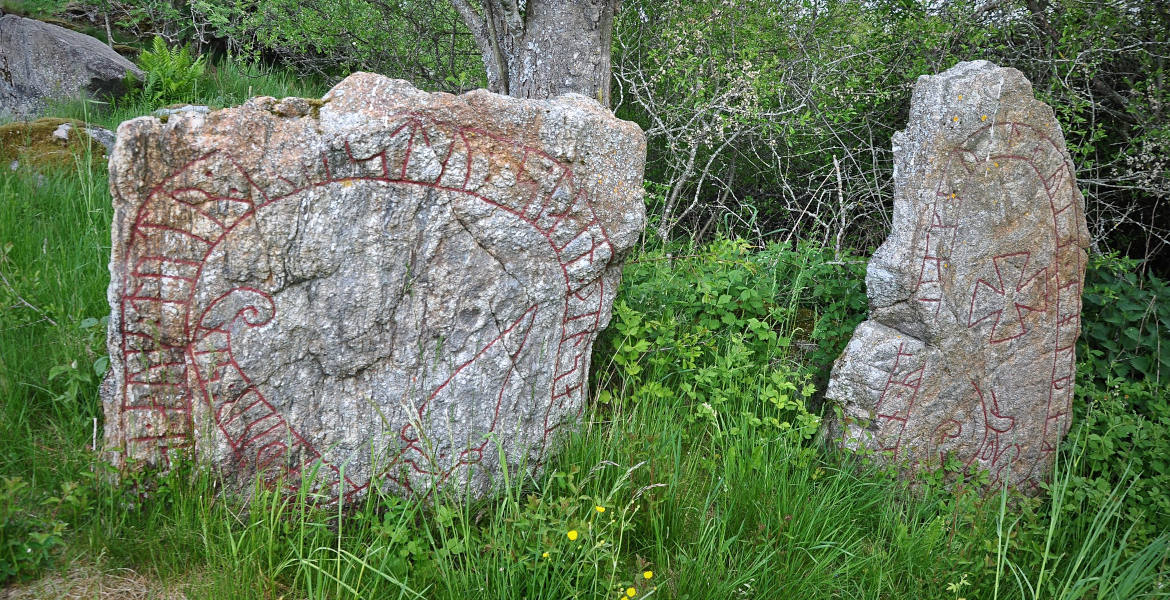
New App Helps Locate Sweden’s Historic Runestones
A new app called Swedish Runestones will help locate historical gems.

Swedish military wants to remilitarize the Åland Islands
The demilitarized autonomy has previously been known as 'the islands of peace.
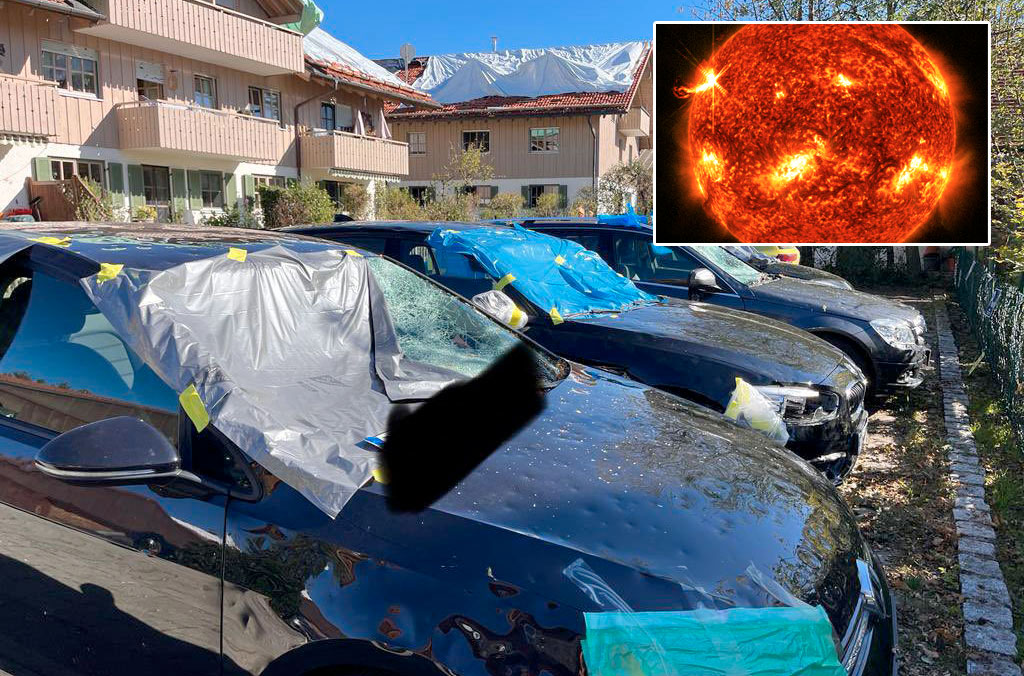
NOAA Predicts Zero Sunspots for Almost the Whole 2030s
CLIMATEThe United States' government scientific organization, the National Oceanic and Atmospheric Administration (NOAA), predicts zero sunspots from 2031 to 2040. This is an extreme situation that has not occurred in as long as humanity has been counting sunspots, and it leads us into uncharted territory in terms of our solar system. However, this prediction aligns with the warnings of the world-renowned solar researcher Valentina Zharkova for many years, who indicated in 2019 various signs of this catastrophic phenomenon, including the extreme hailstorms we have seen in Europe and the world this summer. The forecast and various observations this year give cause for very significant concern. In this unique analysis, Free West Media explains why.

European Nationalist Parties Forge Cooperation Ahead of EU Elections
EUROPEAN ELECTIONSOn Saturday, August 26, representatives of six European nationalist parties gathered in Budapest. The meeting was initiated by the Hungarian party Mi Hazánk and took place in the national parliament. Representatives of the parties signed a joint declaration that not only reaffirms the parties' friendship but also their unity on a range of complex political issues. A surprisingly clear and radical manifesto was established. The hope is that this cooperation will lead to success in the EU elections and eventually result in the formation of a group in the European Parliament. For Swedish nationalism, this meeting marks a success as Sweden, for the first time, has a party represented in a leading nationalist cooperation in Europe. Free West Media was present at this historic event.

Turkey Believes Sweden Hasn’t Done Enough
Sweden will have to wait a bit longer for NATO membership, according to Turkey's Justice Minister Jilmaz Tunc. First, Sweden must extradite the "terrorists" Turkey wants and stop the desecration of the Quran.

Swedish Weapon Takes Down Russia’s Best Attack Helicopter
The Russian attack helicopter Ka-52 is considered one of the world's best and has struck fear in Ukraine, where it has hunted down tanks and other armored vehicles, often beyond the range of many light anti-aircraft systems. However, it has met its match in the Swedish air defense missile system RBS 70, which has quickly led to significant losses for the Russian helicopter forces.

The Sun Drives Earth’s Climate, Not Carbon Dioxide
Top Researchers Push Back Against Climate Lies."The correlation is as clear as day," explained the Israeli astrophysicist Nir Shaviv, who was hailed by the establishment, before his interview with Forbes was hastily deleted. What he says contradicts the climate narrative, which points to humans as responsible for Earth's climate. Shaviv firmly asserts that it is the sun that controls the climate, something that can be scientifically proven in many ways. Contrary to the popular belief, the sun's influence on Earth has, in recent years, caused unusually cold and rainy weather, a trend that solar researchers warn will worsen significantly in the coming decades. The sun has exhibited an unusually low activity since 2016, during Solar Cycle 24, which was the weakest in a century.
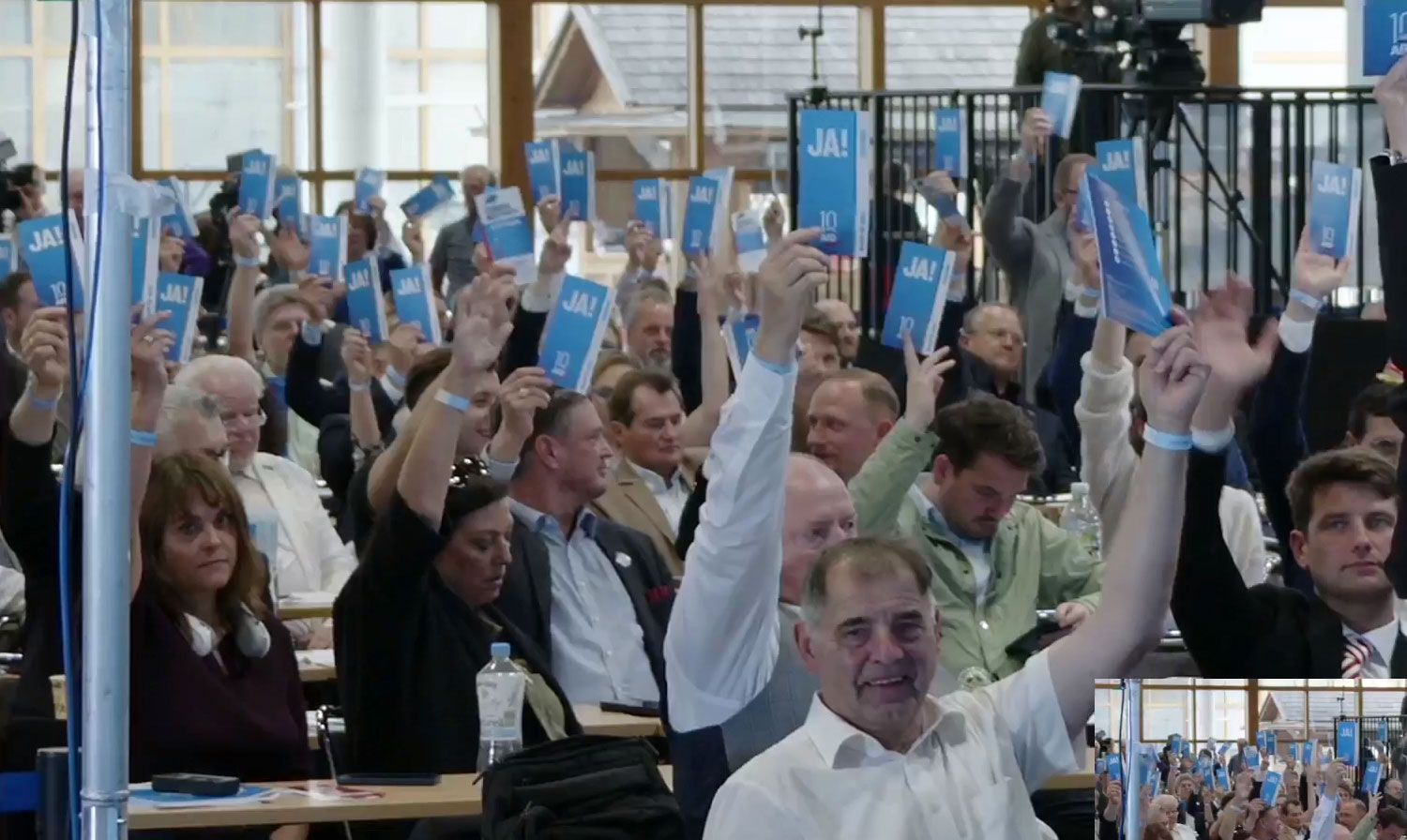
Strong Confidence in German AfD
Alternative for Germany (AfD) held a party conference on July 29-30 to select candidates for the upcoming EU election next year. EU Parliament member Maximilian Krah, belonging to the party's more radical, ethnonationalist faction, was appointed as the top candidate. The party's two spokespersons delivered powerful speeches criticizing the EU's failed migration policy and trade sanctions that isolate Europe and Germany from the rest of the world. They argued that it's time for the EU to return a significant portion of its power to national parliaments. However, they have dropped the demand for Germany to exit the EU.
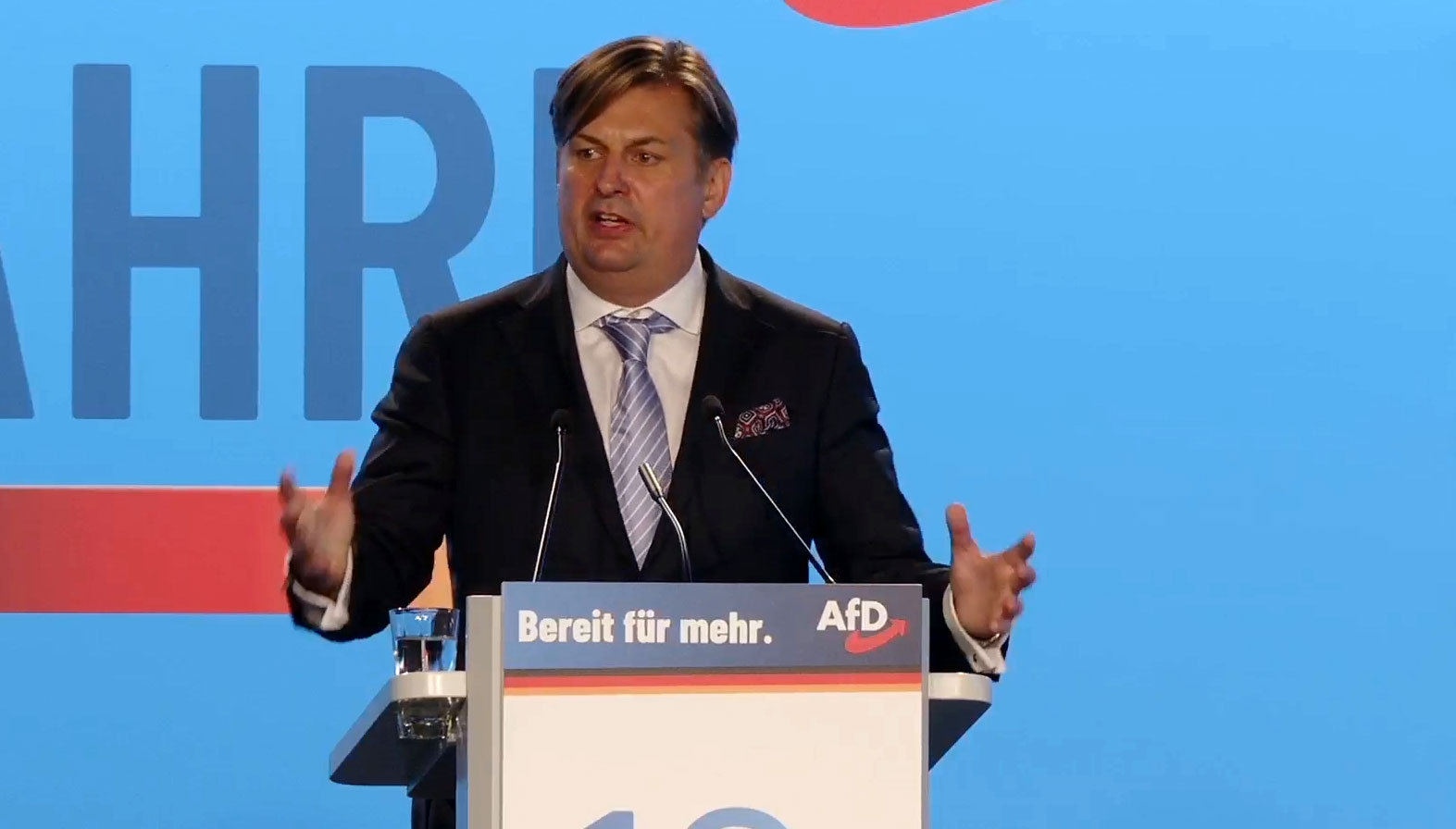
The Establishment Wants to Ban Germany’s Second Largest Party – for the Sake of Democracy
The rising popularity of AfD has raised strong concerns within the establishment. Despite lies and demonization in the media and isolation from the overall political establishment, the party continues to grow. Certain representatives of the party are accused of becoming increasingly "extreme," and in an unusual move, the influential weekly newspaper Der Spiegel demanded that AfD be "banned."

Dutch FvD break through the media blockade
What is happening in the Netherlands? It is often difficult to follow events in other countries, especially when distorted by system media. We give Forum for Democracy (FvD) the opportunity to speak out on the political situation in the Netherlands and the staunch resistance they face in trying to save the country.




No comments.
By submitting a comment you grant Free West Media a perpetual license to reproduce your words and name/web site in attribution. Inappropriate and irrelevant comments will be removed at an admin’s discretion. Your email is used for verification purposes only, it will never be shared.